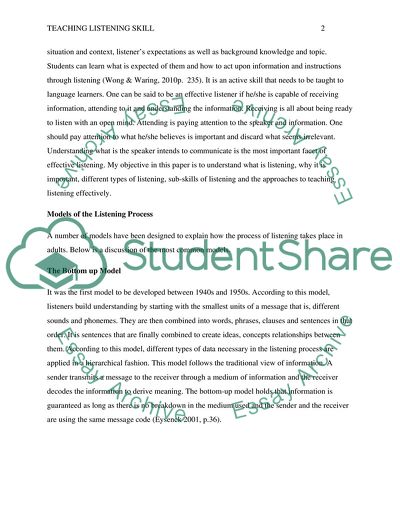Cite this document
(“Teaching Listening Skill In Public High Schools In The Kingdom of Essay”, n.d.)
Teaching Listening Skill In Public High Schools In The Kingdom of Essay. Retrieved from https://studentshare.org/education/1645675-teaching-listening-skill-in-public-high-schools-in-the-kingdom-of-saudi-arabia
Teaching Listening Skill In Public High Schools In The Kingdom of Essay. Retrieved from https://studentshare.org/education/1645675-teaching-listening-skill-in-public-high-schools-in-the-kingdom-of-saudi-arabia
(Teaching Listening Skill In Public High Schools In The Kingdom of Essay)
Teaching Listening Skill In Public High Schools In The Kingdom of Essay. https://studentshare.org/education/1645675-teaching-listening-skill-in-public-high-schools-in-the-kingdom-of-saudi-arabia.
Teaching Listening Skill In Public High Schools In The Kingdom of Essay. https://studentshare.org/education/1645675-teaching-listening-skill-in-public-high-schools-in-the-kingdom-of-saudi-arabia.
“Teaching Listening Skill In Public High Schools In The Kingdom of Essay”, n.d. https://studentshare.org/education/1645675-teaching-listening-skill-in-public-high-schools-in-the-kingdom-of-saudi-arabia.


